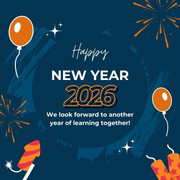| Country | Venezuela |
| Note | I'm freelancer |

|
1
on: Today at 03:26:28 PM
|
||
| Started by Teiner - Last post by Teiner | ||
|
|
||
|
2
on: Yesterday at 08:48:49 PM
|
||
| Started by mars01 - Last post by snowman | ||
|
Merry Christmas to all my friends there... Be good...
|
||
|
3
on: Yesterday at 04:54:09 PM
|
||
| Started by Wizpic - Last post by professor47 | ||
|
I have used Picoscope for 10+ years and love it. Sold by bench scope a while ago and have not missed it.
If you want just a simple scope for canbus, the cheapest one (150USD) does the job if you can live with the smaller memory. They all use the same powerful software that includes CAN plus many other protocols. If you want to debug an event that span over some time you want to consider a step or two up to get more memory. My 5443D can sample 2 seconds of data into the buffer with 42MS/s. With the scroll-wheel on the mouse I can quickly zoom in on ns events. |
||
|
4
on: Yesterday at 03:26:54 PM
|
||
| Started by sphinx - Last post by sphinx | ||
|
Made a simple 3-in-1 project easily modifyable, read text in schematics.
T1 made TH to better handle power and R2v0 for offboard placement if wanted. Select what version short/delete resistor as per version wanted and edit pcb. No gerbers made job file is there, select what file are wanted! Have a look translate/read. https://320volt.com/fan-hizinin-sicakliga-gore-kontrolu-3-farkli-yontem/ For PC-fans 5-30V. Designators are hidden to make it less cluttered. please check circuit and footprints for error, can never be to sure Made with ADA 26 /sphinx |
||
|
5
on: Yesterday at 01:53:44 PM
|
||
| Started by mars01 - Last post by bobcat1 | ||
|
Merry Christmas, happiness ,Peace, and health
Bobi |
||
|
6
on: Yesterday at 12:59:46 PM
|
||
| Started by mars01 - Last post by sphinx | ||
|
sorry for a late Merry Christmas to all!
|
||
|
7
on: Yesterday at 12:19:02 PM
|
||
| Started by mars01 - Last post by Dom | ||
|
Merry Christmas to all of you!
 |
||
|
8
on: Yesterday at 04:55:16 AM
|
||
| Started by mars01 - Last post by tanveerriaz | ||
|
9
on: Yesterday at 04:54:33 AM
|
||
| Started by pushycat - Last post by Flex | ||
|
Attached MSDS of KONTACT PCB PLUS major ingredients is Liquid Isopropanol , Liquid Pentane and Alcohol with Compressed Propane & Butane GAS This will help to find alternate products in non available region.
|
||
|
10
on: December 26, 2025, 10:18:48 22:18
|
||
| Started by mars01 - Last post by especialista | ||
|
My best wishes of Happy Holidays to everyone and your loved ones.
May 2026 be better than 25! |
||


